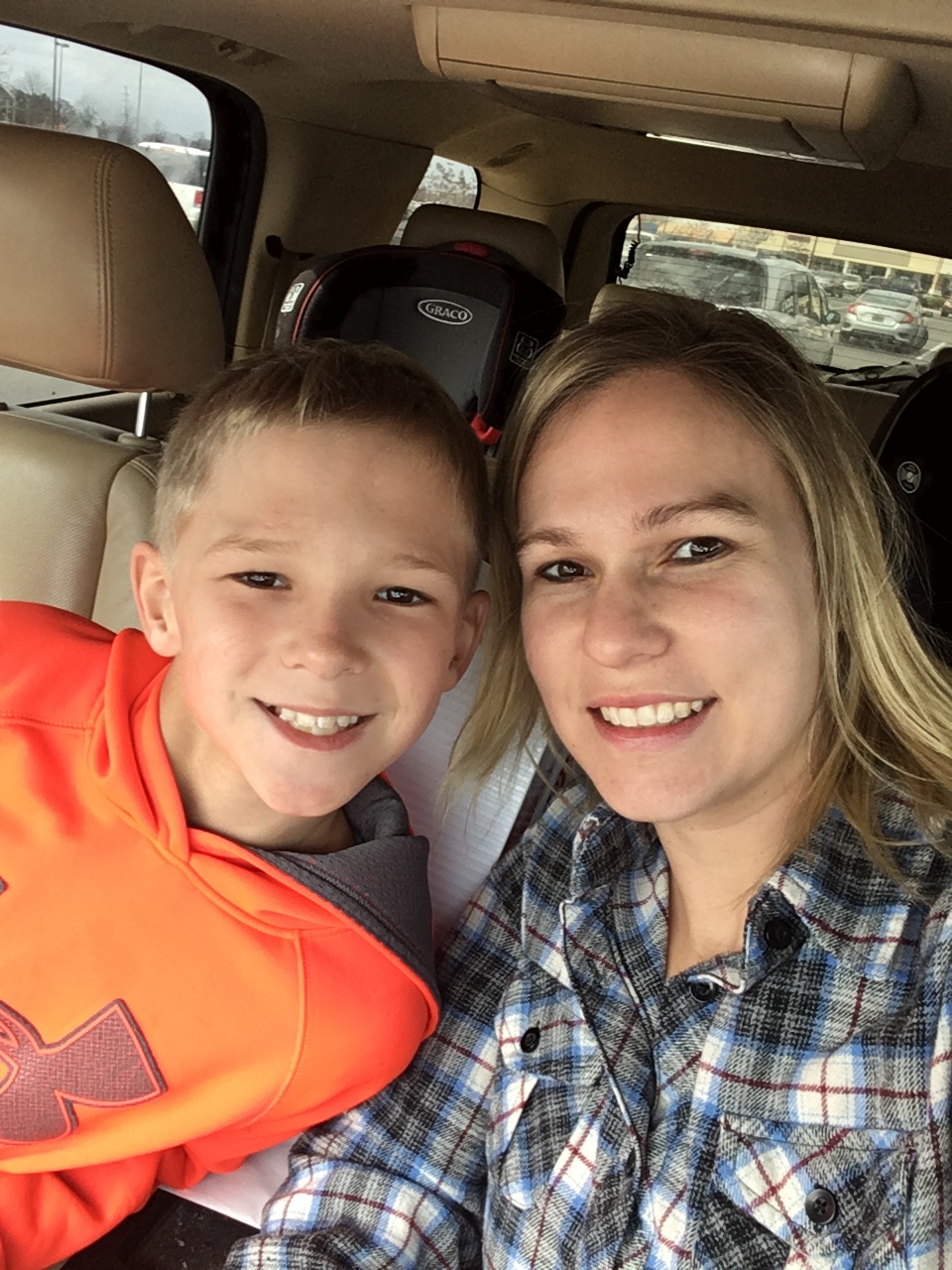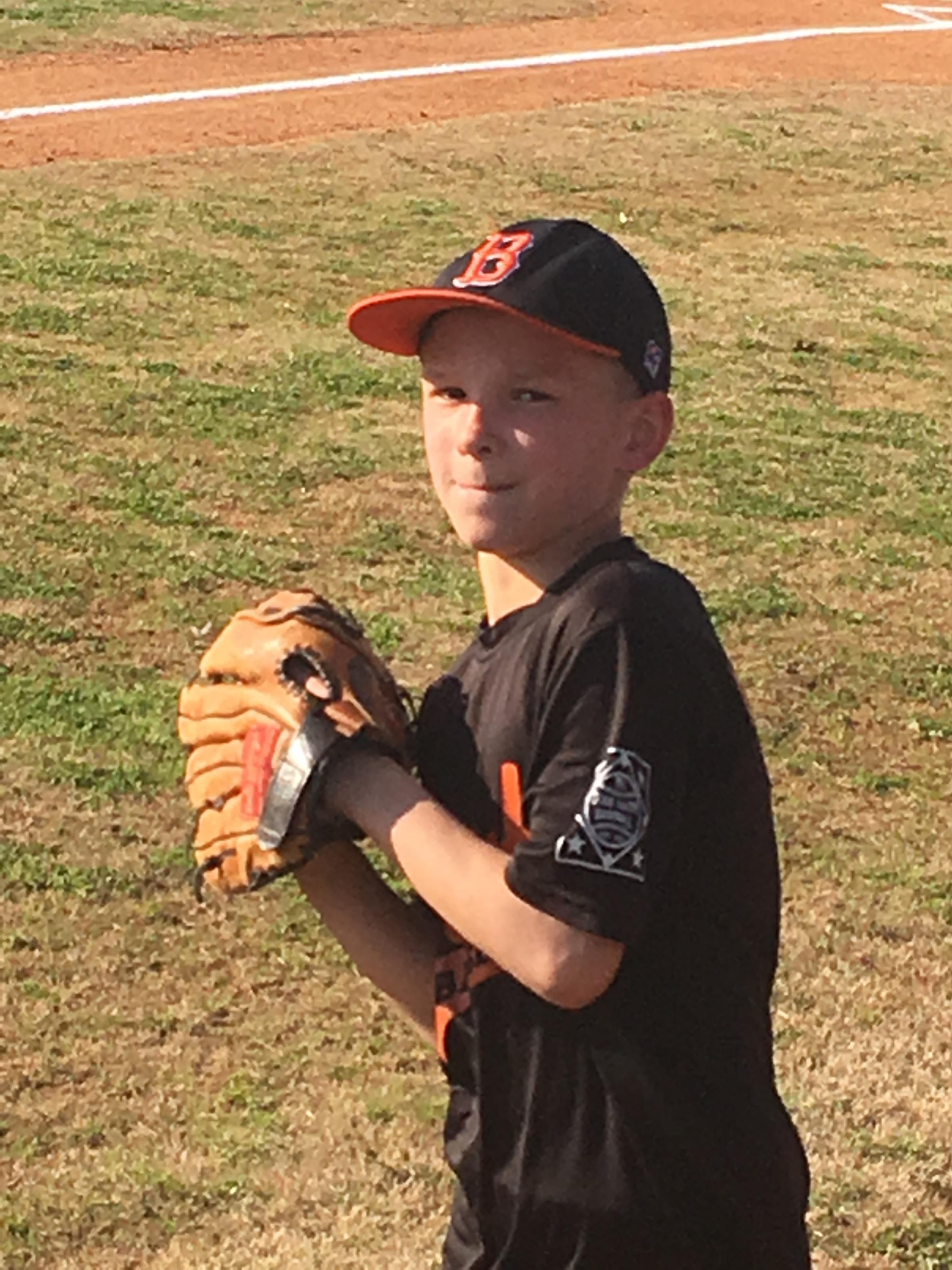
The photo tugged at heartstrings across the world. It showed a young boy leaning against a tiny tombstone with his head bowed. Buried below him was his twin brother who had entered the world with him but not alive.
Five-year-old Walker Myrick had come to Center Hill Cemetery in Lexington, Ala. to tell his brother, Willis, about his first day in kindergarten.
“My brother died,” Walker, now 10, told TIME in a recent interview. “I wanted to share how it went and tell him what I did.”
The poignant image went viral in February — about five years after it was taken — when Walker’s mom posted it on Facebook. It has since raised global awareness for Twin-to-Twin Transfusion Syndrome (TTTS), a little-known and potentially fatal disease that can affect identical twins in the womb.
Brooke Myrick, the boys’ mother, had been carrying identical twin boys for six months in 2007 when she arrived at her doctor’s office for a routine ultrasound and received devastating news.
“Willis didn’t have a heartbeat,” she said. “It’s just a shock. I was told everything was fine. How did this happen?”

Two months later, Myrick delivered both babies. But only one was breathing. “Looking back, I don’t even know how I handled it. I think about it now and I get upset to think that I went through that,” she said. “I just had to focus on Walker.”
After the birth, Myrick finally let herself grieve. And then she made two promises: Walker would always know Willis’ name, and the world would learn about TTTS.
The disease of the placenta affects about 10% of identical twin pregnancies, according to Mary Slaman, president of The Twin to Twin Transfusion Syndrome Foundation, an Ohio-based nonprofit she founded after losing her own baby to TTTS.
The syndrome causes one twin to receive more blood flow than normal from the placenta and the other to receive less. Both scenarios are dangerous and can result in heart failure, as one twin’s heart is forced to work on overdrive and the other becomes anemic, Slaman said. “They’re both equally at risk for heart failure. They’re both in trouble,” she said.
TTTS is not hereditary or genetic, said Slaman, who called it a “random occurrence.” In many cases, there are no severe threats to either baby if the blood flow between them is balanced. But that balance can tip at any time of the pregnancy up until birth and can become life-threatening in 24 hours, according to Slaman.
That’s why it’s important for mothers carrying identical twins or triplets to receive weekly ultrasounds to constantly monitor the situation, she said. “There’s no safe zone in your pregnancy,” Slaman said. But when the imbalance of blood flow is detected early, it can be treated, according to the U.S. National Library of Medicine.
“It’s about empowering parents, not scaring them,” Slaman said. “It could save a life or two, or three or four.”

Slaman praised Walker for his role in spreading the word. The 10-year-old has raised more than $10,000 to donate to The Twin to Twin Transfusion Syndrome Foundation in the last four years through fundraising walks he organizes every March on Willis’ and his birthday.
“Once a twin, always a twin. I think that’s his message, too,” Slaman said.
Walker, a fourth grader, said he’s “happy” that he’s “helping babies” and believes his brother would be proud of him.
“I feel that he’s happy in heaven, and he’s watching over me,” he said.
Myrick said she has been posting the photo of Walker at the cemetery on Facebook on the twins’ birthday every year since 2014, when she began building support for his first fundraiser. It only went viral this year after a U.K. news outlet heard about it and interviewed Myrick for a story. Soon, the photo made headlines in dozens of newspapers and news sites around the globe, including in Japan, Israel, Indonesia, Slovakia and Germany. It was front-page news in the local Times Daily, with the headline: “Brother’s Keeper.”
Myrick said the attention has helped heal the family’s wound. “Knowing it went all over the world, that just gave me so much peace,” she said. “And I know it did [for] Walker because he told me that the world finally knew Willis’ name. I feel almost like a burden has been lifted.”
“Every mother who has lost a child wants to feel like her child didn’t die in vain,” she added. “I will never stop missing him, but I know now that we will save lives with our story and in his memory.”
More Must-Reads from TIME
- Donald Trump Is TIME's 2024 Person of the Year
- Why We Chose Trump as Person of the Year
- Is Intermittent Fasting Good or Bad for You?
- The 100 Must-Read Books of 2024
- The 20 Best Christmas TV Episodes
- Column: If Optimism Feels Ridiculous Now, Try Hope
- The Future of Climate Action Is Trade Policy
- Merle Bombardieri Is Helping People Make the Baby Decision
Contact us at letters@time.com